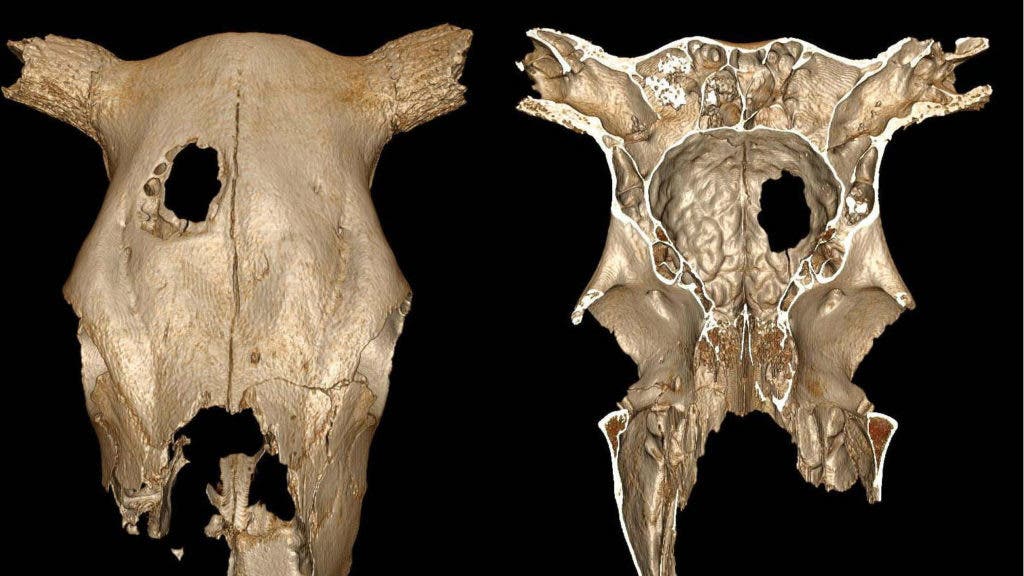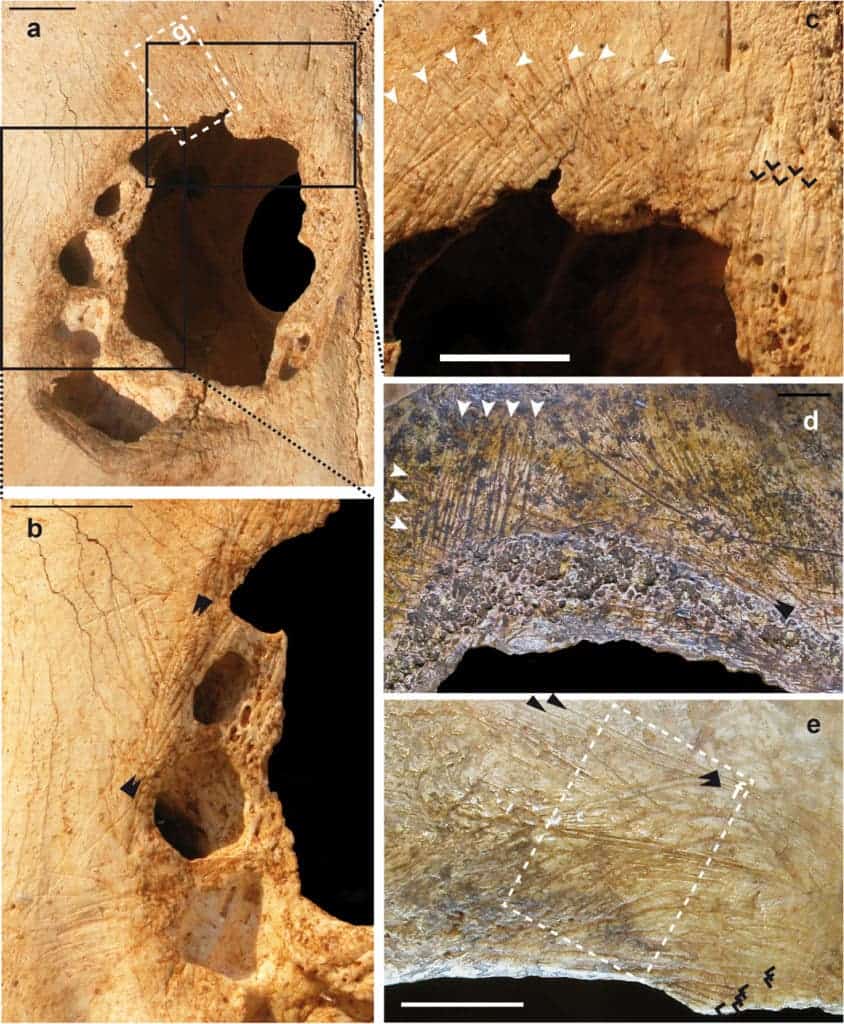Mankind has a long history of highly questionable medical practices, but out of them, trepanation (a surgical intervention in which a hole is drilled or scraped into the skull) definitely takes the prize.
The motivation to drill holes in other people’s skulls haunts me to no end, especially as the practice seems to have survived through the centuries and perhaps even for millennia. Now, scientists have discovered a cow skull that underwent trepanation, suggesting that early humans honed their skills on animals.

It all started about a decade ago, when Fernando Ramírez Rozzi, a paleontologist focusing on human remains at the French National Center for Scientific Research, was approached by a colleague who asked him to examine a strange cow skull. The skull was excavated in France during the late 1970s, in Vendée — a Neolithic site believed to be a trade hub for salt and cattle between 3400 and 3000 B.C.E. The skull featured an unusual hole, which was initially chalked off as an injury from another animal.
But something just seemed off. Working with Alain Froment, an anthropologist at the Museum of Mankind in Paris, Rozzi used advanced imaging techniques to analyze the hole, finding that there was no evidence of blunt force trauma, and the hole is simply too clean to be caused by another animal. They also ruled out infection, cancer, erosion, and pretty much anything that might have caused the hole — anything, that is, except for the most likely scenario: humans.
The hole was similar to trepanation practices, so the authors conclude that the cow’s owners probably wanted to save it from some sort of brain disease. “As early as the Neolithic period, these kinds of symptoms were already linked to brain physiology,” the authors write. If this is indeed the case, then it might not have been such a bad idea — even to this day, in some cases, neurosurgeons treat excess swelling in the brain by removing a small part of the skull.
But this theory is quite a leap, and many questions still remain.

For starters, archaeologists have found the remains of hundreds of cows at this site, but only one with such a hole. If there was an epidemic, you’d expect to see more cows with similar holes, and generally, at the expected size of the herds, one cow would have been easily replaced. Another possibility is that the hole wasn’t made in a trepanation procedure, but rather during some sort of ritual. However, this theory is strongly combated by the fact that only one such hole has ever been found. Furthermore, authors write, it “would have had greater value, practical or symbolic, if performed on a human being rather than on a common animal.”
Instead, they believe that the cow was a test subject for someone who was preparing to carry out similar procedures on humans. Finding test subjects was tricky, as volunteers would, obviously, be scarce. Cadavers would be no good since they don’t react like the living organism, so an animal like a cow or a pig could have been quite useful. Interestingly, several pig skulls have been found in different site with similar holes, which might be an important piece of the puzzle.
Of course, it could also have a completely different that we’re all missing. This is always the big challenge when working in archaeology: you’re trying to draw as much as possible from incomplete information, and there are slim chances of ever finding confirmation. Whatever the case may be, the idea that that seven millennia ago someone was practicing brain surgery on cows is perplexing. But who knows — perhaps 7,000 years from now, future observers will look back on our medical practices and ask themselves, “Why on Earth did they do this?”


